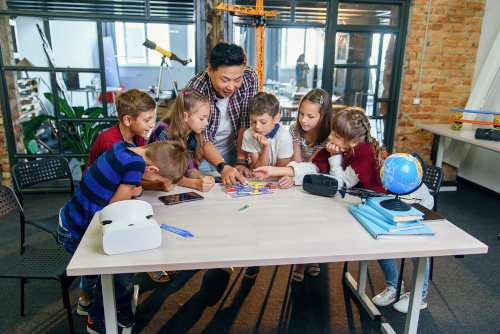
One of the many reasons I love working for Van Andel Institute for Education is that I get to be a teacher Fairy Godmother. Teaching is an important but difficult job, and sometimes educators can get stuck on a specific need for their classroom. Maybe it’s finding the perfect resource for a lesson or connecting certain content to a project idea.
Whatever the situation calls for, my colleagues and I love to swoop in and help make their dreams a reality. But every Fairy Godmother needs a magic wand to work her wonders, and for my part, there’s no better resource to meet teacher needs than project-based learning.
What is project-based learning, anyway?
Let’s start with what project-based learning is not. PBL is not simply a fun and creative project you implement in class. Don’t get me wrong, having students participating in a fun, imaginative activity can be good, but it’s a bit like the “dessert” of learning. These activities can be sweet and easy but they’re not exactly nourishing. PBL is the main course—the discovery of knowledge and skills through the development of a meaningful, sustained project.
True project-based learning is recognized by characteristics like sustained inquiry, iterative thinking, and cross-curricular learning. Unlike a standard project, which is usually a one-and-done deal, PBL should build on itself.
Related:
5 tools that support project-based learning
Reflections on project-based learning

